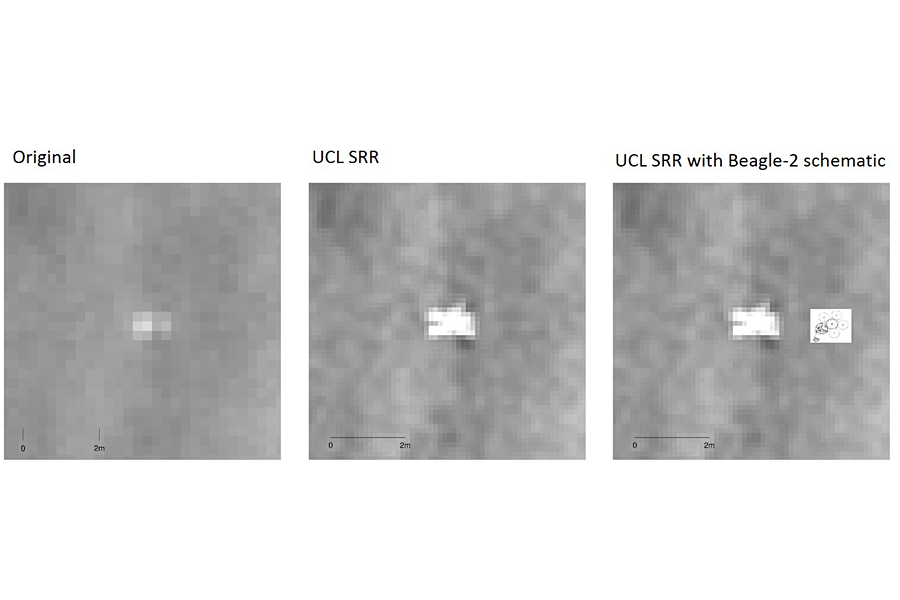New imaging method sharpens focus on lost Beagle 2 Mars lander
Loading...
Scientists are bringing Mars into focus – from the sky.
Using a new technique, researchers can now reveal the Red Planet at a resolution five times greater than previous images. The trick? Stack up images of the same spot snapped from orbit.
And researchers have already revealed one object brought into better focus by this technique: the lost Beagle 2 lander.
The European Space Agency's rover was scheduled to phone home on Christmas Day in 2003 after landing on Mars. But after it was released for landing, Beagle 2 made not a peep.
Initially the rover was presumed destroyed during the landing process. But over a decade later, NASA's Mars Reconnaissance Orbiter snapped pictures of Beagle 2, revealing that the rover had indeed made it to the surface of the Red Planet. At that point, scientists theorized the malfunction occurred after landing, in the deployment of the lander's solar panels.
The new imaging technique, called Super-Resolution Restoration (SRR), supports the identification of the Beagle 2 rover and the theory that it landed before a hardware malfunction took it out of commission.
"Given the size of Beagle 2, even with super-resolution images you are not likely to see more than a series of blobs because it is so small," said Mark Sims of the University of Leicester, the former mission manager for Beagle 2, reported the Guardian. "What it does show is that it is on the surface and it is at least partially deployed."
Researchers initially described SRR in a paper published in February in the journal Planetary and Space Science, but have only just begun applying it.
Even the best cameras orbiting both Mars and Earth today have a maximum resolution of about 10 inches (25 centimeters) per pixel. But by melding images of the same view snapped from different angles, SRR increases that resolution to about 2 inches (5 centimeters). That means that objects as small as an apple can show up as a dot, and the golf-cart sized Beagle is easier to identify.
"We now have the equivalent of drone-eye vision anywhere on the surface of Mars where there are enough clear repeat pictures. It allows us to see objects in much sharper focus from orbit than ever before and the picture quality is comparable to that obtained from landers," said paper co-author Jan-Peter Muller from the University College London Mullard Space Science Laboratory, in a news release.
"As more pictures are collected, we will see increasing evidence of the kind we have only seen from the three successful rover missions to date. This will be a game-changer and the start of a new era in planetary exploration."
The new technique works well on Mars, as changes to the planet's surface take place over spans for time that vary from decades to millions of years. The orbiters can compile images with gaps as long as 10 years between them and still use SRR. But on Earth, with a roiling atmosphere and constantly growing vegetation, pictures would have to be taken in much quicker succession.








